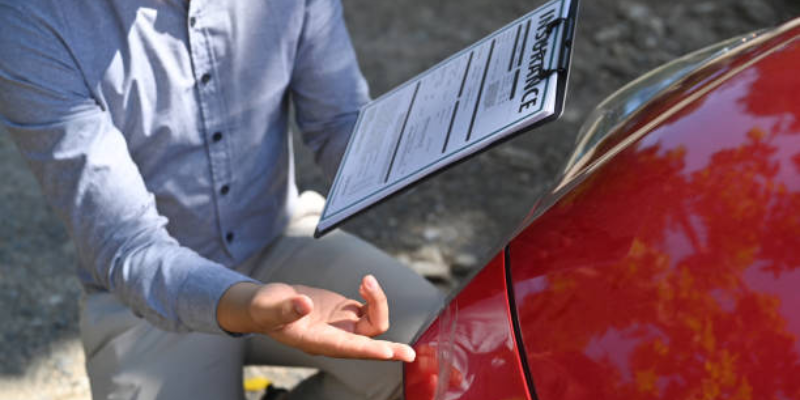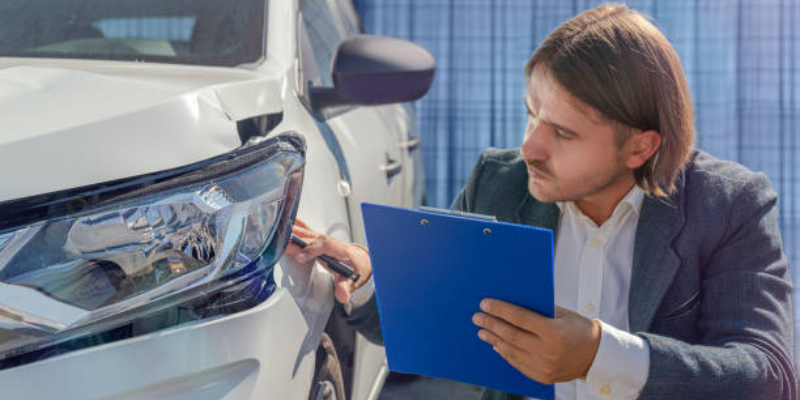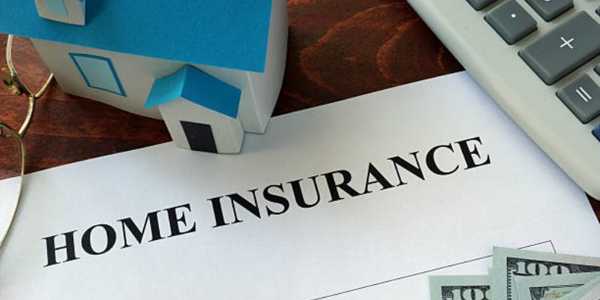How to File a Car Insurance Claim Step-by-step
In the unfortunate event of a car accident, filing a car insurance claim is vital for every driver. Carrying out this insurance claim process shouldn't seem too daunting. In due course, with some preparation, the reason for concern can easily be managed. You will feel more confident after reading this guided outline on the entire insurance claim process, split into simple steps.
Step 1: Analyzing the Situation And Staying Safe
Above anything else, safety is most important when involved in a car accident, so you need to make sure that everyone is safe before taking any other steps. If there are injuries, call for emergency services without delay. Once everything is accounted for, take a deep breath to calm yourself. Keeping calm will enable you to think and act clearly.
Assess the situation: is the car operational? Are there any potential hazards around like fuel leaks or electrical wires? Move yourself and others to a safe location if possible. If the car isn’t drivable, turn on hazard lights to warn other drivers.

Step 2: Gather Information:
Now that you are safe, it is time to capture all the information you need. Get the details of the other driver(s) involved in the case. This includes their full name, phone number, address, license plate number, insurance company, policy number, and driver's license number. You should also make a note of the year, model, and make of their vehicle too.
Capture images of the area, damage to all vehicles, and any injuries sustained. These photos can be of utmost importance during the claims process. Furthermore, make a note of the weather, the state of the roads, and any nearby traffic signs or signals. This aids in giving the insurance adjuster a more detailed perception of the situation.
Get the contact details of any bystanders as well. Their testimony can lend credence to your version of events. Remember, maintaining objectivity while detailing the whole event is fundamental. Apologizing or placing blame is not your responsibility; the authorities and insurers will handle that for you.
Step 3: Contact The Authorities
Depending on how bad the accident was, it is advisable that you call the police. For minor accidents, some locations do allow you to submit a police report via the internet. If however there is noticeable destruction, injury, or even death, then getting in contact with the police is of utmost importance.
When the officer arrives, remember that you are conveying the facts only, and not exaggerating anything. They will get everything documented in an official report that both sides will be able to get later on. This document is crucial for establishing fault and for processing the claims that follow.
Step 4: Notify Your Insurance Company
Do this step as soon as reasonably possible. You should inform your insurance company about the accident. Most companies allow you to do this over the phone, app, or website. Make sure that you give them all the relevant facts that you already have. Be candid about what happened and do not hide anything.
Your insurer will send a claims examiner who will walk you through the remainder of the process. They might have additional questions or need more documents. In order to speed up the resolution process, do everything you can to help them.
Step 5: Understand Your Coverage
Consider reading the policy before proceeding further. This way, you will know what to expect and what will not be covered. It is important to remember what type of car coverage you have selected. These policy types typically include liability, collision, comprehensive, uninsured and underinsured motorist, personal insurance protection (PIP), and medical payments.
Your auto insurance liability coverage would pay for your repairs if another driver hit and injured you. But, in the case where you are the one who caused the accident, your own collision coverage would pay for the damages. In such cases, comprehensive policies usually take care of damages that aren’t caused due to a collision like theft or a natural disaster. Knowing these differences assists in setting proper expectations pertaining to what reimbursement one should receive.

Step 6: Get Estimates and Repairs
After performing the initial examination, the next step is to estimate all costs relating to the repair. While many insurers expect you to go to specific body shops for estimates, others may allow a greater latitude. Regardless of the policy, it is smart to get multiple estimates as this shows transparency.
Once you have settled on an estimation provider, the next step is scheduling repairing. Keep these documents as some of your policy provider might reimburse deductibles after deducting them, while others might deduct them upfront. This information is key and should be discussed with your provider at the beginning of the claim.
Step 7: Review the Settlement Offer
After the evaluation is completed, a claims adjuster will provide a settlement offer to you that you will have to verify to your estimates. Does the figure they estimate coincide with yours? If that is not the case, then you may have to negotiate until both parties reach a satisfactory agreement.
Remember that settlements, like court awards, are not always lump sums. Sometimes, a variety of payments may be necessary to resolve issues such as the diminished value or rental vehicles. It is always crucial to read the fine print before signing anything.
Claim Processes Comparison Among Insurers
In the insurance world, different businesses focus on different aspects of the claims made under their policies. Some companies prioritize speed and promise resolutions within a few days, while others emphasize precision, causing slower response times. Looking through reviews or rating sites which archive customer comments is one way to gather useful information about each company's strengths and weaknesses.
In addition, this industry in particular has seen greatly enhanced due to this technological development. There are now communication platforms that allow contact between the client and client manager seamlessly. Live chat, video-call inspections, automatic notifications, and many other functions make the work incredibly easier. Apart from cost and coverage, consider how easy it is to use the company's systems when choosing an insurance company.
Effects of Claiming On An Insurance Policy
Claiming an insurance policy can have effects that extend beyond finances. After a claim, a number of insurers will adjust the premiums according to the new associated risk profiles they have established. Therefore, your rates might go up while you are not at fault. To avoid rate increases, ask about plans where the first accident is forgiven or aid plans for safe drivers.
In addition, frequent claims can indicate increased volatility for the underwriters. This development might cause policy cancellations. Thus, weigh the decision to file claims on smaller incidents as they may add up to larger challenges in the future. Sometimes, it is better to pay out of pocket to save in the long run.
Tips for Smoother Claims Experience
To ease the pain of the claims process and make it as simple as possible, here are some tips that you can use:
Keep records of all of the details of the incident.
Have open and truthful conversations with those involved.
Answer all requests for information and documents promptly.
Use the available channels provided to check the status of your claim.
Take legal assistance if in case negotiations get stalled or disputes arise.
As you know, having patience is key. While waiting can feel frustrating sometimes, remaining proactive helps reduce some of the delays.

Getting Help for Future Incidents
Thus, filing a claim for car insurance should no longer be a challenge to readers after this detailed step by step guide. No one looks forward to dealing with accidents, so arming yourself with the knowledge makes it that much easier. By following the pointers provided, you will be able to easily handle tricky situations.
Sometimes, life gives you unexpected twists, but being ready can change the outcome quite a bit. So whenever you’re planning to go out on the road, make sure you keep this checklist in mind.



